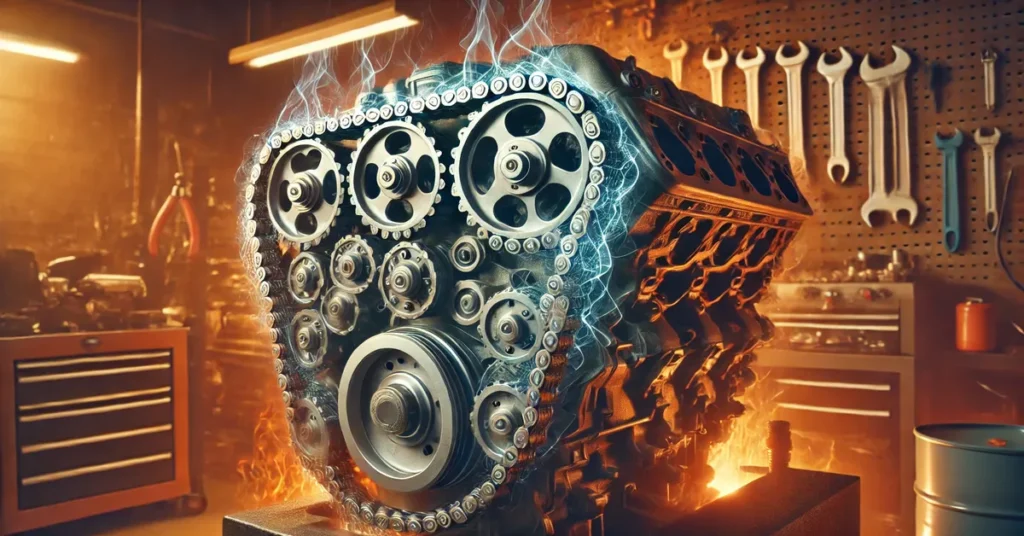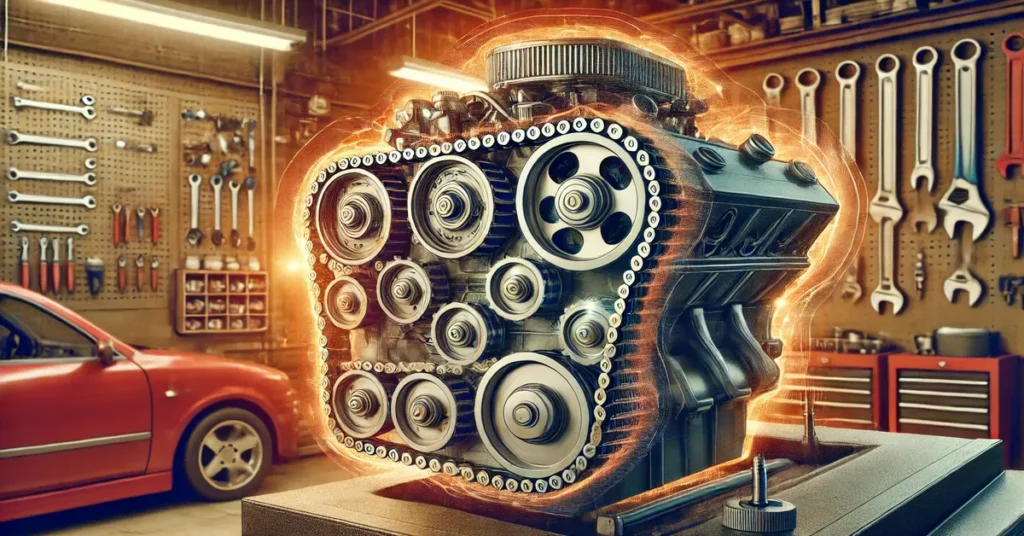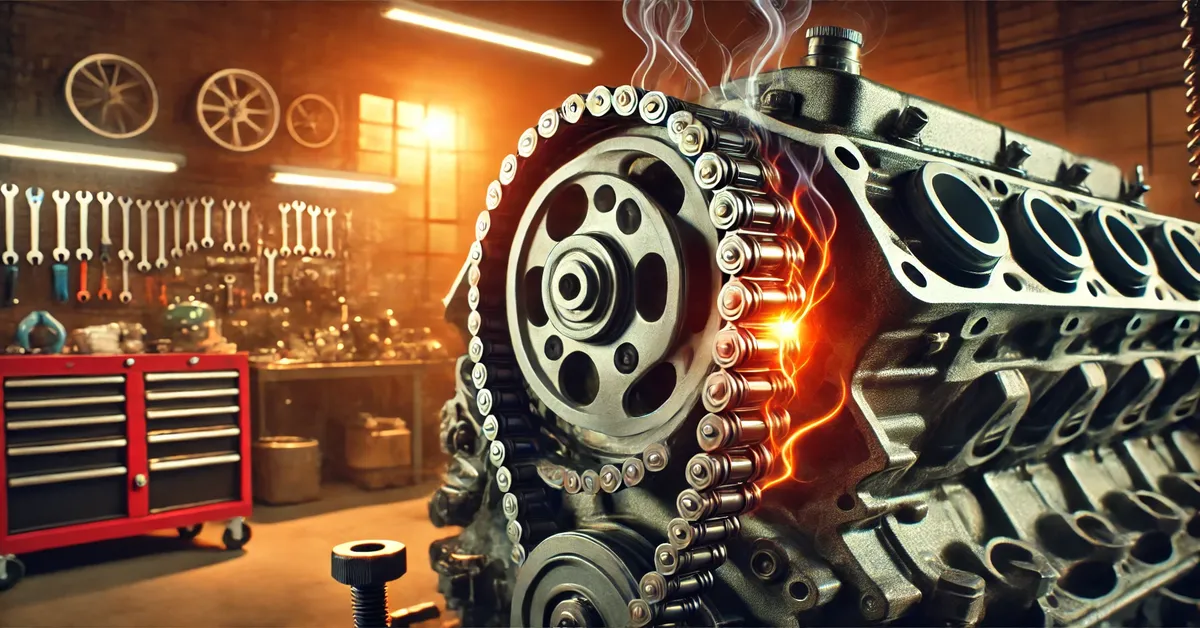A timing chain is a critical component in an internal combustion engine, responsible for synchronizing the rotation of the crankshaft and camshaft, ensuring that the engine’s valves open and close at precisely the right moments during the intake and exhaust strokes. Unlike a timing can timing chain only show symptoms when engine is warm belt, which is made of rubber and typically requires can timing chain only show symptoms when engine is warm regular replacement, a timing chain is made of metal and is designed to last much longer. However, like any mechanical part, it can wear down over time and may begin to show symptoms of failure, particularly under certain conditions.
One of the more perplexing issues that some vehicle owners encounter is the appearance of timing chain symptoms only when the engine is warm. In this article, we will explore the role of the timing chain, why timing chain symptoms might only appear when the engine is warm, common signs of a failing timing chain, and what vehicle owners can do if they suspect timing chain problems.
The Role of the Timing Chain (can timing chain only show symptoms when engine is warm)
The timing chain is essentially the mechanical link that connects the crankshaft to the camshaft. Its role is to keep these two components in perfect synchronization, so the engine’s intake and exhaust valves open and close at the correct time in relation to the movement of the pistons. This synchronization is crucial for proper engine operation. If the timing chain becomes loose or jumps a tooth, the engine can lose timing, leading to serious performance issues or even catastrophic can timing chain only show symptoms when engine is warm engine failure.
Unlike timing belts, which often have a replacement interval, timing chains are generally expected to last the life of the engine. However, this does not mean they are immune to wear and tear. Over time, timing chains can stretch, the tensioner that keeps the chain tight can fail, or the chain can develop other problems, especially as the engine accumulates miles.
Why Timing Chain Symptoms May Only Appear When the Engine is Warm
When diagnosing timing chain issues, many people notice that certain symptoms may only manifest once the engine has warmed up. This phenomenon can be perplexing, but it has to do with the nature of how engine components behave at different temperatures. Here are a few reasons why timing chain symptoms might only show when the engine is warm:
1. Thermal Expansion of Metals
Engines are composed primarily of metal components, and metal expands when heated. As the engine warms up, the metal parts of the engine, including the timing chain, expand. This expansion can cause a marginally worn or loose chain to become more pronounced in its symptoms. For example, if the timing chain has already stretched, the increased heat can exacerbate can timing chain only show symptoms when engine is warm the issue, leading to more noticeable problems such as rattling or misfires when the engine is warm.
2. Oil Viscosity Changes
The engine oil that lubricates the timing chain and its components changes its viscosity depending on the engine temperature. When the engine is cold, the oil is thicker, providing a cushioning effect that may mask some of the symptoms of a failing timing chain. However, as the engine warms up, the oil thins out, reducing its ability to dampen the sound and movement of a loose or worn timing chain. This is why you might only hear rattling or other noises from the timing chain once the engine reaches its operating temperature.
3. Increased Stress on Components
As the engine warms up, the components within it expand, increasing the stress on parts like the timing chain, gears, and tensioner. If the chain is already worn or the tensioner is failing, the increased stress can make the symptoms more noticeable when the engine is warm. For example, a failing tensioner might be able to maintain enough tension when the engine is cold, but can timing chain only show symptoms when engine is warm once the engine heats up and the can timing chain only show symptoms when engine is warm parts expand, it may no longer be able to keep the chain properly tensioned, leading to issues such as chain rattle or misfires.
4. Electronic Engine Controls
Many modern vehicles have complex electronic engine controls that adjust various parameters based on the engine’s operating temperature. For example, the engine’s timing might be adjusted once the engine reaches a certain temperature to optimize performance or emissions. If the timing chain is already worn, this adjustment might make the symptoms more noticeable once the engine is warm, leading to issues such as rough idling, loss of power, or even the check engine light coming on.

Common Symptoms of a Failing Timing Chain
Whether the symptoms appear when the engine is cold, warm, or at any temperature, a failing timing chain can cause a number of noticeable issues. Below are some can timing chain only show symptoms when engine is warm of the most common symptoms that vehicle owners might encounter if their timing chain is starting to fail:
1. Rattling Noise from the Engine
One of the most common symptoms of a failing timing chain is a rattling noise coming from the engine, particularly when the engine is warm. This noise is usually can timing chain only show symptoms when engine is warm caused by a loose or stretched timing chain that is no longer able to maintain proper tension. The noise may be more noticeable at idle or when the engine is under load.
2. Engine Misfires
A worn timing chain can cause the engine to lose timing, which can lead to misfires. Misfires occur when the fuel-air mixture in one or more cylinders does not ignite at the correct time, leading to a rough-running engine, poor fuel economy, and a loss of can timing chain only show symptoms when engine is warm power. Misfires are often more noticeable when the engine is warm because the engine is operating under different conditions than when it is cold.
3. Check Engine Light
A failing timing chain can cause the engine’s computer to detect a problem with the engine’s timing, which may trigger the check engine light to come on. This light can be triggered for a variety of reasons, so it’s important to have the vehicle diagnosed by a professional mechanic to determine if the timing chain is the cause.
4. Loss of Power
If the timing chain is worn or has jumped a tooth, the engine may lose power because the valves are not opening and closing at the correct time. This can can timing chain only show symptoms when engine is warm lead to a noticeable loss of power, particularly when accelerating or driving at higher speeds.
5. Difficulty Starting the Engine
A failing timing chain can make it difficult to start the engine, particularly when the engine is warm. This is because the engine’s timing may be off, causing can timing chain only show symptoms when engine is warm the can timing chain only show symptoms when engine is warm engine to struggle to start or crank over.
6. Vibration or Shaking
If the timing chain is significantly worn or loose, it can cause the engine to vibrate or shake, particularly at idle. This can be a sign that the timing chain is no longer maintaining proper tension and needs to be replaced.

Diagnosing Timing Chain Problems
If you suspect that your vehicle’s timing chain is failing, it’s important to have it diagnosed by a professional mechanic. Timing chain problems can be difficult to diagnose, particularly if the symptoms only appear when the engine is warm. A mechanic can timing chain only show symptoms when engine is warm will typically perform the following steps to diagnose a timing chain problem:
1. Listening for Noises
One of the first steps in diagnosing a timing chain problem is listening for any unusual noises coming from the engine. A mechanic will listen for rattling or can timing chain only show symptoms when engine is warm ticking noises, particularly when the engine is warm, as this can be a sign of a loose or worn timing chain.
2. Checking for Misfires
A mechanic may use a diagnostic scanner to can timing chain only show symptoms when engine is warm check for any engine misfire codes, which can indicate that the engine’s timing is off due to a worn timing chain.
3. Inspecting the Timing Chain Tensioner
If the mechanic suspects that the timing chain tensioner is failing, they may inspect the tensioner to see if it is maintaining proper tension on the chain. A failing tensioner can cause the chain to become loose, leading to the symptoms mentioned earlier.
4. Visual Inspection of the Timing Chain
In some cases, the mechanic may need to perform a visual inspection of the timing chain to check for signs of wear or stretching. This may involve removing can timing chain only show symptoms when engine is warm can timing chain only show symptoms when engine is warm the engine’s timing cover, which can be a labor-intensive process.
Repairing or Replacing a Timing Chain
If the timing chain is found to be the cause of the problem, it will need to be repaired or replaced. The timing chain is a critical component of the engine, so it’s important to address any issues as soon as they are detected to avoid further damage to the engine. Here are the typical steps involved in repairing or replacing a timing chain:
1. Replacing the Timing Chain
If the timing chain is worn or stretched, it will need to be replaced. This typically involves removing the engine’s timing cover, removing the old chain, and installing a new one. In some cases, the mechanic may also need to replace other components, such as the can timing chain only show symptoms when engine is warm timing chain tensioner, guides, or sprockets.
2. Replacing the Timing Chain Tensioner
If the timing chain tensioner is failing, it will need to be replaced to ensure that the timing chain remains properly tensioned. This is often done at the same time as the timing chain replacement.
3. Replacing Other Timing Components
In some cases, other timing components, such as the timing gears or guides, may need to be replaced if they are worn or damaged.
Conclusion
While timing chains are generally more durable than timing belts, they are still subject to wear and tear over time. If you notice any of the symptoms mentioned can timing chain only show symptoms when engine is warm in this article, particularly if they only appear when the engine is warm, it’s important to have your vehicle inspected by a professional mechanic. Addressing timing chain issues early can help prevent more serious engine damage and keep your vehicle running smoothly.
FAQs
- Can a failing timing chain cause engine damage? Yes, if the timing chain fails, it can cause the engine to lose timing, which can lead to serious engine damage, including bent valves or damaged pistons.
- Why does my engine rattle only when it’s warm? The engine may rattle when warm because the metal components expand as they heat up, which can exacerbate a loose or worn timing chain.
- How long should a timing chain last? A timing chain is designed to last the life of the engine, but it can wear out over time, particularly if the vehicle can timing chain only show symptoms when engine is warm is not properly maintained.
- Can I drive with a worn timing chain? It is not recommended to drive with a worn timing chain, as it can lead to more serious engine problems if it fails.
- What causes a timing chain to fail? Timing chains can fail due to wear and tear, lack of proper lubrication, or a failing timing chain tensioner.
- How much does it cost to replace a timing chain? The cost of replacing a timing chain can vary depending on the make and model of the vehicle, but it is typically a labor-intensive and expensive repair.











